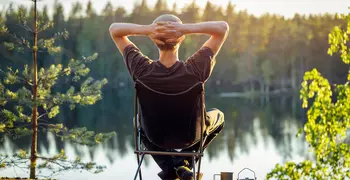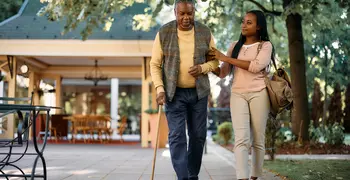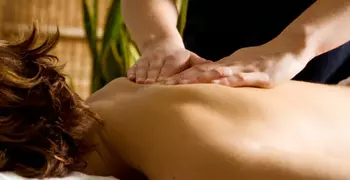Practices
Craniosacral Therapy
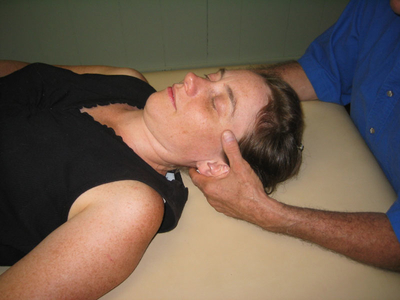 Craniosacral therapy is a gentle, non-invasive, hands-on healing modality that focuses on the wave-like rhythmic pulse that goes through the entire body. This therapy stems from osteopathy, which is an approach that emphasizes the role of the musculoskeletal system in health and disease.
Craniosacral therapy is a gentle, non-invasive, hands-on healing modality that focuses on the wave-like rhythmic pulse that goes through the entire body. This therapy stems from osteopathy, which is an approach that emphasizes the role of the musculoskeletal system in health and disease.
In a typical one- to two-hour session, the client lies quietly, fully clothed, while the practitioner makes light contact at selected points around the head, torso, knees, and feet. This light contact consists of gentle finger pressure, with no bone manipulation or forceful thrusts such as those used in chiropractic work, bone-setting, or osteopathy.
The practitioner notes what he or she perceives at selected points on the body and in the craniosacral system (the membranes and cerebrospinal fluid that surround and protect the brain and spinal cord), as well as the client's attitude and intentions. The goal of craniosacral therapy is to help get rid of restrictions in this system to improve the functioning of the central nervous system.
How could it benefit health and wellbeing?
Some people use craniosacral therapy as an adjunct to other forms of treatment, including migraine headaches, chronic pain, chronic fatigue syndrome, post-traumatic stress disorder, trauma of any kind, post-surgical recovery, TMJ, and others.
Craniosacral therapy does no harm when practiced sensitively and respectfully by a trained practitioner. It may support an attitude shift in clients toward a more direct and intimate sense of their own wellbeing, a feeling of "being more at peace with oneself." It may also support a natural shift to self-acceptance, a more natural capacity for loving relations, and a sense of being connected to life.
What is the cerebrospinal wave?
There is a great deal of debate and conjecture in the literature on craniosacral therapy on the nature of the cerebrospinal wave, or the cranio-rhythmic impulse, including:
- Where the pulse originates (this is not accounted for in the literature).
- Whether or not cranial bones move (classical anatomists generally believe that the cranial sutures fuse in adulthood; craniosacral practitioners, on the other hand, believe that the cranial sutures have motility).
- Whether or not there is a consistent, measurable pulse (there are various attempts to quantify the rate of cycles per minute of the craniosacral pulse, but so far they have been inconclusive).
- Whether or not the presence of the practitioner influences the pulse (this issue goes to the heart of the dichotomy between integrative and allopathic philosophies - our perspective is that it is naïve to think that we don't affect what we observe, or touch, or to which we put our attention).
Where can I find a practitioner?
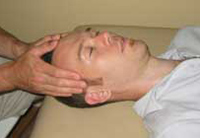
When choosing a practitioner, it is important to get references, but ultimately it's up to you to find the person who "feels right to you."
There are some online directories for craniosacral therapists in the U.S. and abroad, including Upledger's International Association of Healthcare Practitioners and database of Registered Craniosacral Therapy Practitioners from the The Craniosacral Therapy Association of North America.
Craniosacral therapy may or may not be covered under insurance. Providers typically need to be licensed in a particular specialty (for example, massage therapy, chiropractic, or physical therapy) in order for insurance overage.
Craniosacral therapy is sometimes reimbursed under employee flexible healthcare accounts, but it is important to contact employers or benefits offices to make sure.
Where can I get more information?
BiodynamicCraniosacral Therapy Association of North America (BCTA/NA)
To learn more about craniosacral therapy, you may want to read the following articles and books:
Castro-Sánchez, A.M., Matarán-Peñarrocha, G.A., Sánchez-Labraca, N., Quesada-Rubio, J.M., Granero-Molina, J., Moreno-Lorenzo, C. (2011). A randomized controlled trial investigating the effects of craniosacral therapy on pain and heart rate variability in fibromyalgia patients. Clinical Rehabilitation;25(1):25-35.
Chaitow, L., Ed. (2005). Cranial Manipulation Theory and Practice: Osseous and Soft Tissue Approaches, 2nd Edition. Edinborough, London, New York: Elsevier/Churhill Livingstone.
Curtis, P., Gaylord, S.A., Park, J., Faurot, K.R., Coble, R., Suchindran, C., Coeytaux, R.R., Wilkinson, L., Mann, J.D. (2011). Credibility of low-strength static magnet therapy as an attention control intervention for a randomized controlled study of CranioSacral therapy for migraine headaches. Journal of Alternative and Complementary Medicine;17(8):711-21.
Farasyn, A. (1999). New hypothesis for the origin of cranio-sacral motion. Journal of Bodywork and Movement Therapies, 3(1), 229-237.
Gerdner, L.A., Hart, L.K., Zimmerman, M.B. (2008). Craniosacral still point technique: exploring its effects in individuals with dementia. Journal of Gerontological Nursing; 34(3):36-45.
Hanten, W.P., Olson, S.L., Hodson, J.L., et al. (1999). The effectiveness of CV-4 and resting position techniques on subjects with tension-type headaches. Journal of Manual and Manipulative Therpapies; 7(2):64-70.
Harrison, R.E., Page, J.S. (2011). Multipractitioner Upledger CranioSacral Therapy: descriptive outcome study 2007-2008. Journal of Alternative and Complementary Medicine;17(1):13-7.
Jäkel, A., von Hauenschild, P. (2011). Therapeutic effects of cranial osteopathic manipulative medicine: A systematic review. Journal of the American Osteophatic Assocation;111(12):685-93.
Magoun, H.I. (1976). Osteopathy In The Cranial Field, 3rd ed. Meridian, Idaho: The Cranial Teaching Foundation.
McPartland, J.M. & Mein, E. A. (1997). Entrainment and the cranial rhythmic impulse. Alternative Therapies Health Medicine, 3(1).
Milne, H. (1995). The heart of listening: A visionary approach to craniosacral work. North Atlantic Books, CA.
Moran, R. W., & Gibbons, P. G. (2001). Intraexaminer and interexaminer reliability for palpation of the cranial rhythmic impulse at the head and sacrum. Journal of Manipulative and Physiological Therapeutics, 24(3).
Raviv, G., Shefi, S., Nizani, D., Achiron, A. (2009). Effect of craniosacral therapy on lower urinary tract signs and symptoms in multiple sclerosis. Complementary Therapies in Clinical Practice; 15(2):72-5.
Rogers, J S., Witt, P.L., Gross, M.T., Hacke, J.D., & Genova, P. A. (1998). Simultaneous palpation of the craniosacral rate at the head and feet: Intrarater and interrater reliability and rate comparisons. Physical Therapy, 78(11).
Rogers, J.S., & Witt, P.L. (1997). The controversy of cranial bone motion. Journal of Orthopedic Sports Physical Therapy, 26(2).
Sills, F. (2001). Craniosacral Byodynamics: The Breath of Life. Berkley, CA: North Atlantic Books.
Upledger, J. E. (1995). Research and observations that support the existence of a craniosacral system. UI Enterprises.
Upledger, J. E., DO, OMM (March, 2003). The Practical Pitfalls of Research. Massage Today, 3(3). Accessed online May 24, 2005.
